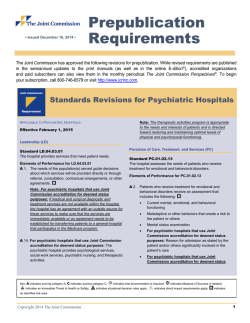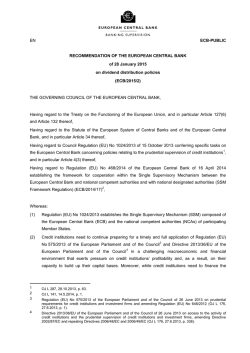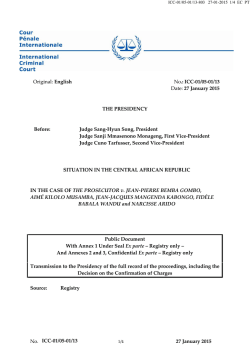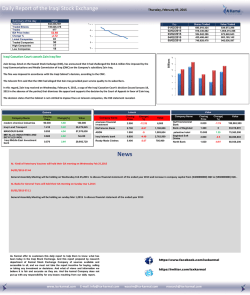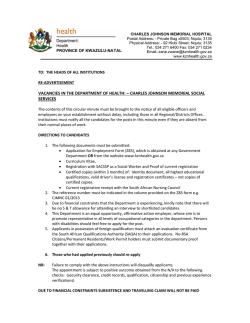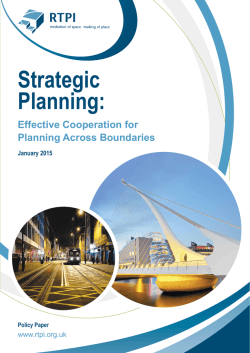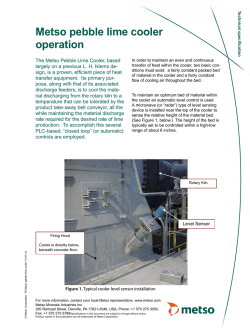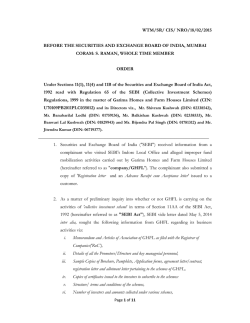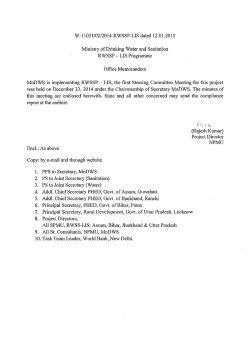
Infrastructure Bill PDF 92 KB
Committee: Date: Planning and Transportation 3rd February 2015 Subject: Infrastructure Bill Item no. Public Report of: Remembrancer For Information Summary This report advises the Committee of the relevant provisions of the Infrastructure Bill currently before Parliament. The Bill will introduce a principle of “deemed discharge” so that local planning authorities will be deemed to agree that planning conditions have been met if they do not respond in time to the developer; empower the Mayor of London to make orders granting planning permission for development on the application of one or more London councils (including the Common Council); establish a streamlined process for voluntary transfers of public land to the Greater London Authority for the purpose of house-building; transfer the duty to maintain a register of local land charges from local authorities to the Land Registry; enable housing developers to meet carbon standards in part though off-site measures; put in place a revised Electronic Communications Code which governs the installation of telecommunications infrastructure; and enable those who have paid for a new electricity connection from an independent provider to recoup a share of the costs from subsequent users of the connection. Recommendation: It is recommended that the Committee: 1) receive this report; and 2) note that confirmation is being obtained that property not held by the Common Council as a local authority will be excluded from the scope of new schemes for the transfer of public land. Main Report 1. The Infrastructure Bill was presented to Parliament last summer and is expected to be enacted this spring. Most attention has focused on proposals to make it easier to carry out „fracking‟ without agreement from the landowner. This report concentrates on matters of greater relevance to the work of the Committee, namely reforms to the planning system and related areas. Planning 2. The most significant change to the planning system will be the introduction of “deemed discharge” of planning conditions. This is intended to ensure that development is not delayed by the failure of local planning authorities to discharge conditions in a timely fashion. If an application for the discharge of a condition does not receive a response from the local planning authority within six weeks, then the developer will be entitled to serve a notice of its intention to rely upon deemed discharge. If no decision is made within a further two weeks of that notice, then the condition will be deemed to be discharged. Certain types of condition will be exempt, including those attached to development that is subject to an Environmental Impact Assessment, requiring entry into a section 106 agreement, requiring the approval of reserved matters under an outline permission, or relating to highway safety, flood risk, contaminated land or archaeological investigation. 3. Another new feature of the planning system will be the “Mayoral development order.” This will enable the Mayor of London to grant planning permission for specified development on sites in Greater London. The power will only be exercisable on the application of one or more London local planning authorities in relation to sites within their areas. The main intention behind the measure is to ease the approval of large-scale housing developments of the sort proposed in the Mayor‟s Housing Strategy, particularly where they cross borough boundaries. 4. Adaptations will also be made to the national infrastructure planning regime, intended to make it easier to obtain minor changes to development consent orders (such as that used to grant permission for the Thames Tideway Tunnel). Land and housing 5. A general power will be provided for the Secretary of State to make schemes transferring publicly owned land to the Greater London Authority (or the Homes and Communities Agency elsewhere in the country) for the purpose of house-building. Such schemes will only be made with the consent of the existing landowner. The aim of the new provisions is to provide a quicker and simpler process than currently exists for making public land available for new housing. Although the schemes will be voluntary, the Government‟s Bill Team has been asked to confirm that property not held by the Common Council as a local authority will be excluded from their scope. 6. The duty to maintain a register of local land charges will be transferred from local authorities (including the Common Council) to the Land Registry, in order that all such charges can be brought together in a single digitised database. The Government has given assurances that any costs incurred in converting the existing data will be met by the Land Registry. Local authorities will be required to register any charges originating with them (such as planning conditions) with the Land Registry. 7. Changes will be made to the legal framework of the Building Regulations, paving the way for an “allowable solutions” scheme whereby developers of new housing will be able to meet carbon-neutral standards in part through contributions to off-site projects rather than in the development itself. Some London MPs have expressed fears that developers will be encouraged to fund work in cheaper parts of the country instead of improving energyefficiency in the capital. The Government has indicated that local authorities will be encouraged to assist in the development of carbon-reduction projects to attract contributions under the scheme. Infrastructure 8. At an advanced stage of the Bill the Government brought in amendments to replace the Electronic Communications Code, which governs the rights of telecommunications providers to install and maintain equipment on others‟ land. The new Code will give providers automatic rights to assign, share and upgrade equipment, where this would not adversely affect the interests of the landowner. On the other hand, it will include a simpler process for landowners to obtain the removal or repositioning of equipment, particularly where its presence would obstruct a planned redevelopment. It is hoped that this will make landowners more willing to agree to the installation of apparatus such as mobile telephone masts in the first place. The new Code could therefore be beneficial in enabling the deployment of new mobile masts (3G, 4G and eventually 5G) to provide more comprehensive network coverage in the City. It will, though, apply only prospectively, and so not to infrastructure installed under existing arrangements. Officers will continue to follow the progress of this measure and will bring further details to the attention of Members as appropriate. 9. Another late addition to the Bill concerns electricity connections and the socalled “second comer” rules. These allow a landowner or developer who has met the costs of a new electricity connection to recoup a share of those costs from others who subsequently make use of that connection. At present the rules apply only to connections arranged through UK Power Networks, but the Bill will extend them to connections purchased from independent providers. The measure is intended to encourage greater competition and choice in the market for new electricity connections. 10. The Bill will also enable the setting up of a government-owned company to take on the role of the Highways Agency. The Government says that this will ensure stability of investment, although the Opposition claims that it is intended to pave the way for future privatisation. Recommendation: 11. It is recommended that the Committee: 1) receive this report; and 2) note that confirmation is being obtained that property not held by the Common Council as a local authority will be excluded from the scope of new schemes for the transfer of public land. Contact: Sam Cook Assistant Parliamentary Affairs Counsel | Remembrancer‟s Office 020 7332 3045 | [email protected]
© Copyright 2026


